| DESCRIPTION | HISTORY |
PLEASE CLICK ON THE IMAGES FOR LARGER VERSIONS, WHERE AVAILABLE
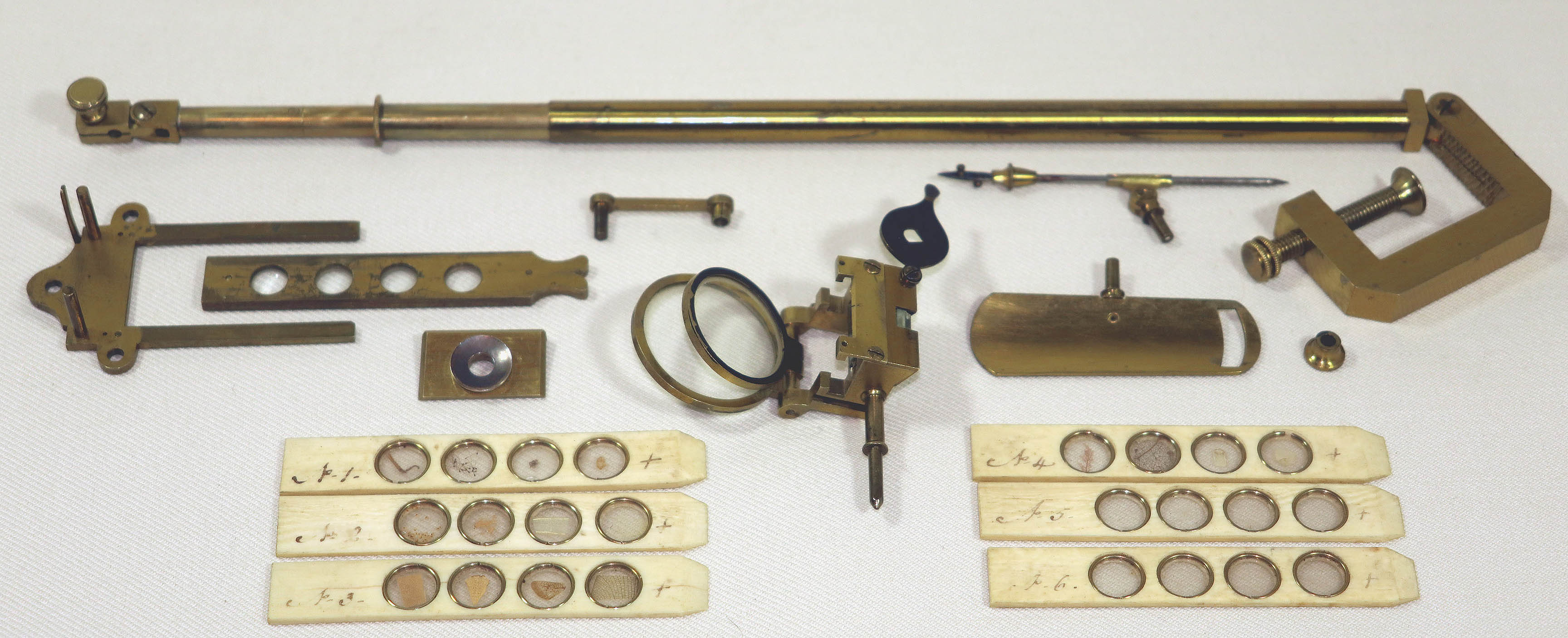
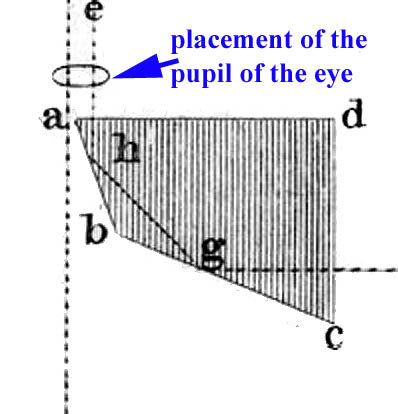 We are grateful to Dr Joseph Zeligs for providing the images and a description of this microscope. This is a simple microscope which incorporates a Wollaston-type camera lucida. The camera Lucida itself follows
Wollaston's original description closely. It features a double-refracting (4-sided in section) prism, so that the image is not reversed.
We are grateful to Dr Joseph Zeligs for providing the images and a description of this microscope. This is a simple microscope which incorporates a Wollaston-type camera lucida. The camera Lucida itself follows
Wollaston's original description closely. It features a double-refracting (4-sided in section) prism, so that the image is not reversed. 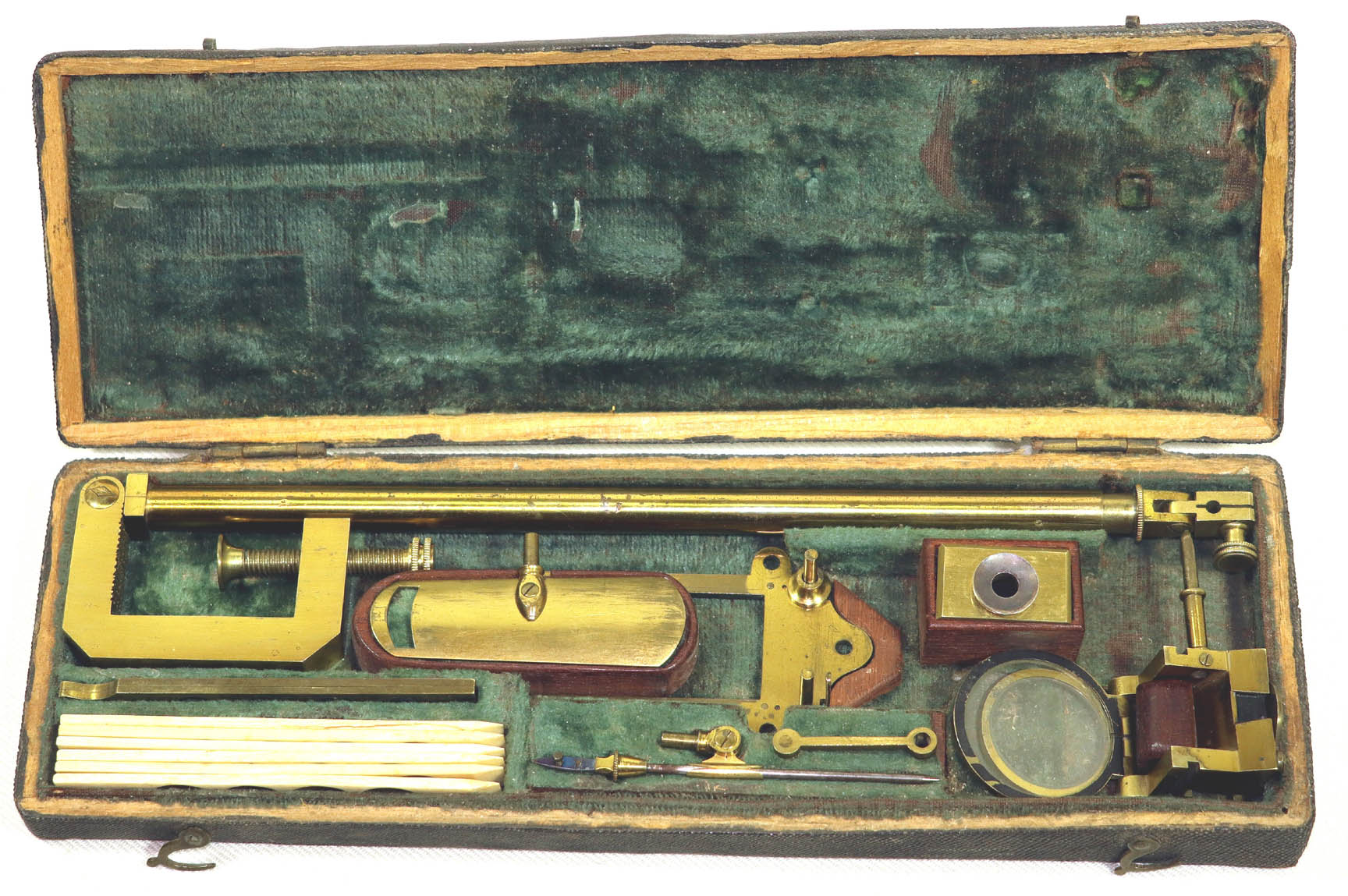
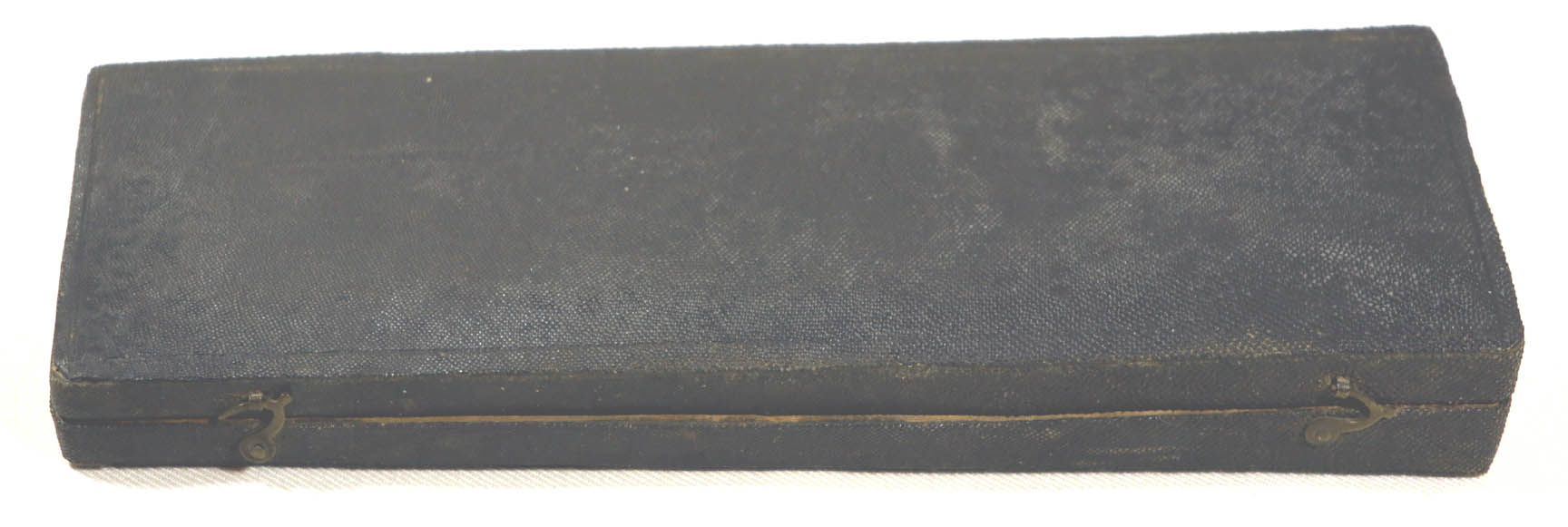 The case is beautifully fitted, with non-rectangular dimensions and wooden interior stays. It is covered in fishskin on all 6 surfaces and lined with green plush, like typical 18th century outfits.
The case is beautifully fitted, with non-rectangular dimensions and wooden interior stays. It is covered in fishskin on all 6 surfaces and lined with green plush, like typical 18th century outfits. 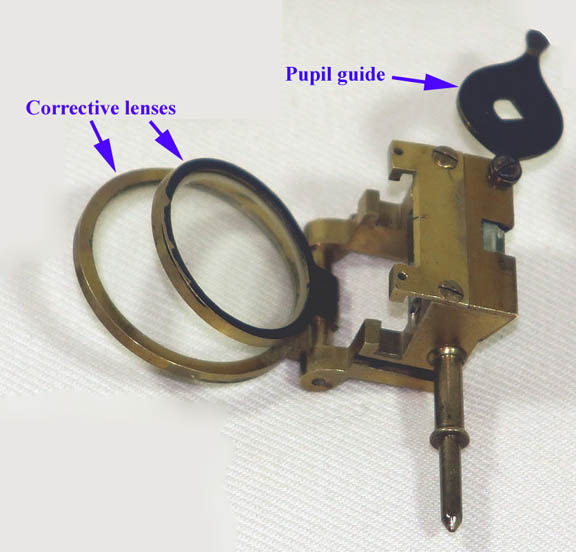
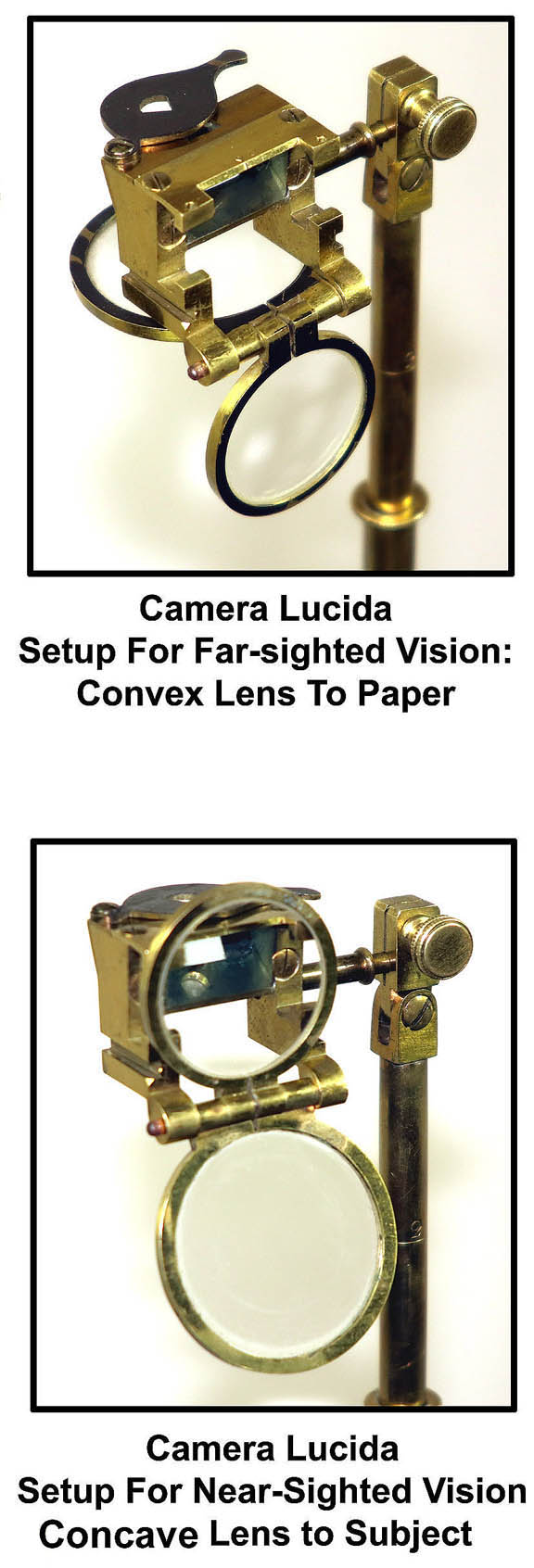 It has Wollaston's original swiveling 'pupil guide' to help position the eye such that the upper portion of the pupil faces the prism and sees the subject to be drawn and the lower portion of the pupil faces the drawing paper. There are also two integral hinged corrective lenses, as advocated by Wollaston, which serve to roughly equalize the accommodation required by the user's eye to the paper versus the subject. For those who are far—sighted, the convex lens swings below the prism, facing the drawing. For those with near—sighted vision, the concave lens is swung between the prism and the subject.
It has Wollaston's original swiveling 'pupil guide' to help position the eye such that the upper portion of the pupil faces the prism and sees the subject to be drawn and the lower portion of the pupil faces the drawing paper. There are also two integral hinged corrective lenses, as advocated by Wollaston, which serve to roughly equalize the accommodation required by the user's eye to the paper versus the subject. For those who are far—sighted, the convex lens swings below the prism, facing the drawing. For those with near—sighted vision, the concave lens is swung between the prism and the subject. 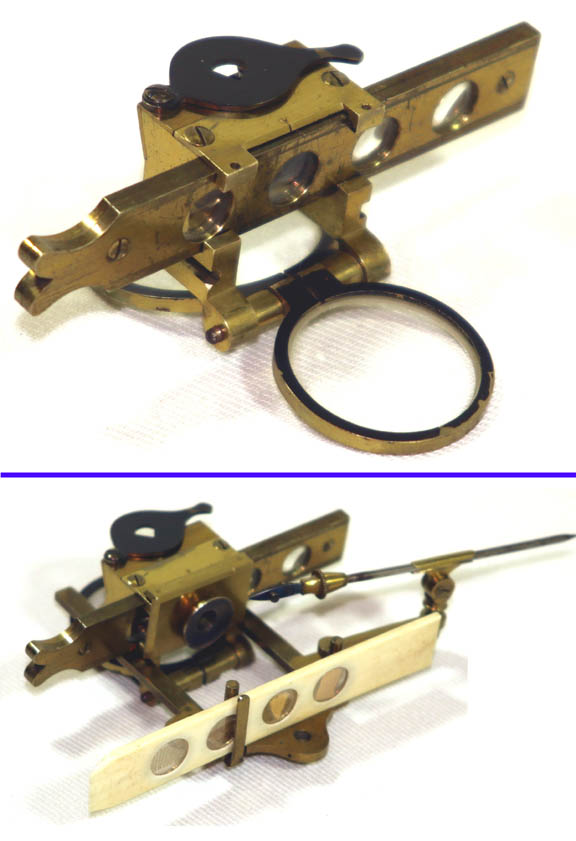
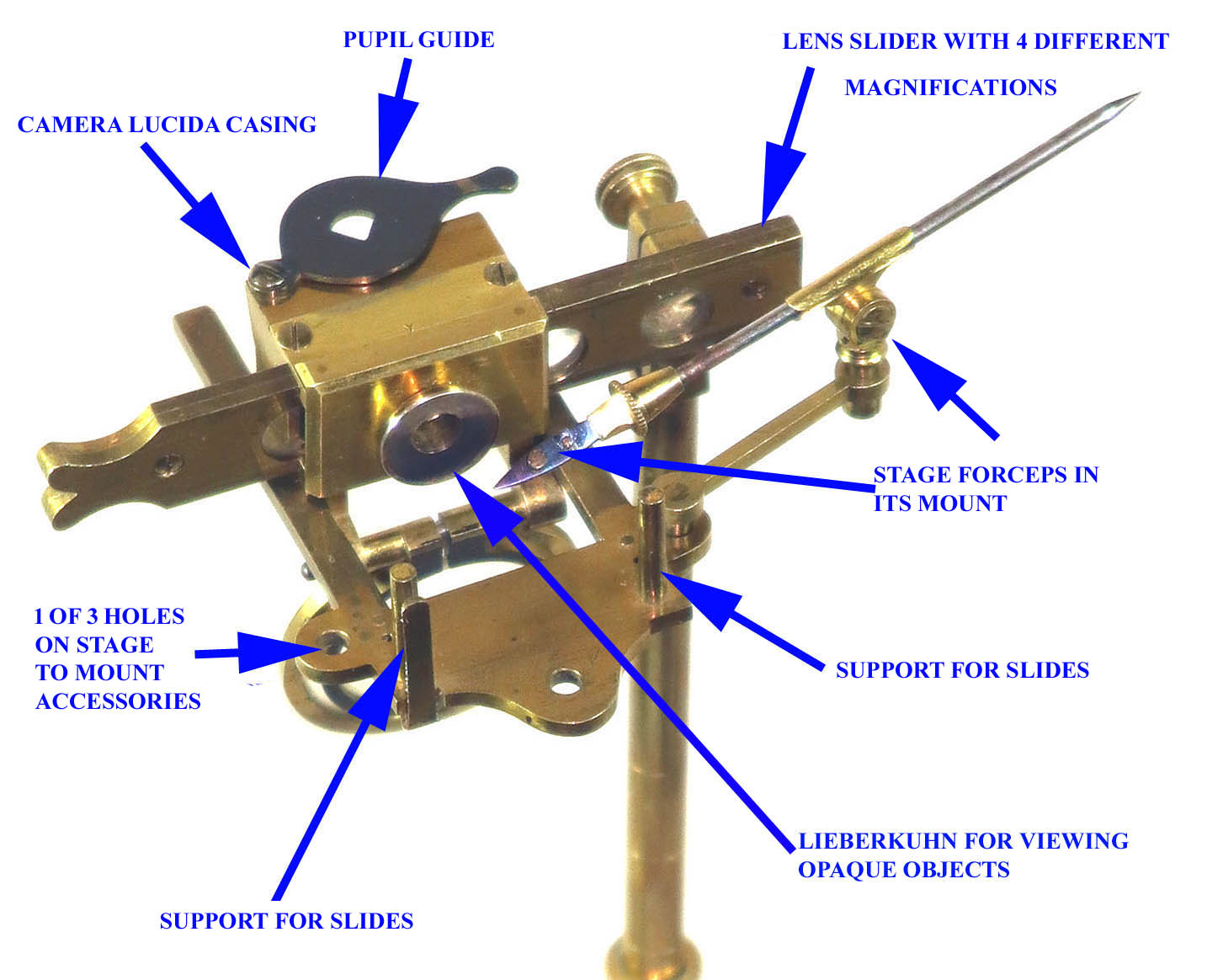 The simple microscope is designed to be integrated with the camera and in fact, has no provision to allow it to be used without it. A brass slider with 4 lenses fits within guides in front of the prism to be set at indicated spots for each lens. All lenses are relatively low power, the highest about 25X.
The simple microscope is designed to be integrated with the camera and in fact, has no provision to allow it to be used without it. A brass slider with 4 lenses fits within guides in front of the prism to be set at indicated spots for each lens. All lenses are relatively low power, the highest about 25X.
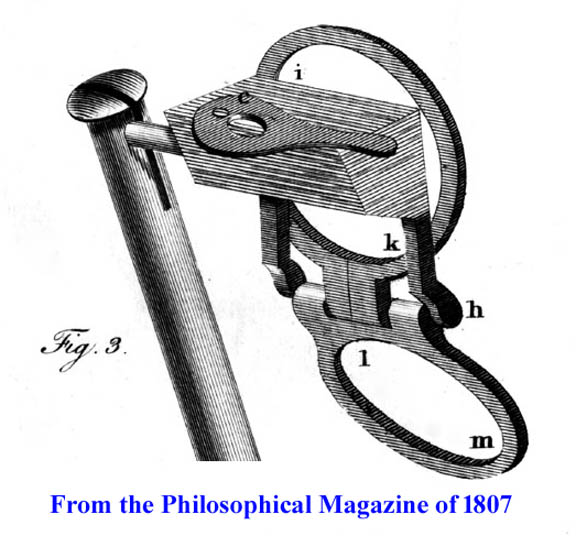 The idea of a camera lucida is first known to be proposed by Kepler in 1611, but there is no evidence it was constructed prior to the early 19th century. William Hyde Wollaston is generally credited with the invention, and his patent of 1806 shows how it uses a specially shaped prism. The first official published description was in the Philoscophical Magazine of 1807. He did not initially adapt it to compound microscopes and this came later. Early on however, it seems it was adapted to this simple microscope configuration and comes with a case and accessories of a style that date to the late 18th and early 19th centuries. For a more detailed history of the camera lucida for the microscope, and other examples and variations, please see the dedicated camera lucida page. You may also wish to read:
the article 'Wollaston's Experimental Camera Lucida at the Whipple Museum' in the Bulletin of the Scientific Instrument Society, Vol 144, March 2020, pp41-43.
The idea of a camera lucida is first known to be proposed by Kepler in 1611, but there is no evidence it was constructed prior to the early 19th century. William Hyde Wollaston is generally credited with the invention, and his patent of 1806 shows how it uses a specially shaped prism. The first official published description was in the Philoscophical Magazine of 1807. He did not initially adapt it to compound microscopes and this came later. Early on however, it seems it was adapted to this simple microscope configuration and comes with a case and accessories of a style that date to the late 18th and early 19th centuries. For a more detailed history of the camera lucida for the microscope, and other examples and variations, please see the dedicated camera lucida page. You may also wish to read:
the article 'Wollaston's Experimental Camera Lucida at the Whipple Museum' in the Bulletin of the Scientific Instrument Society, Vol 144, March 2020, pp41-43.